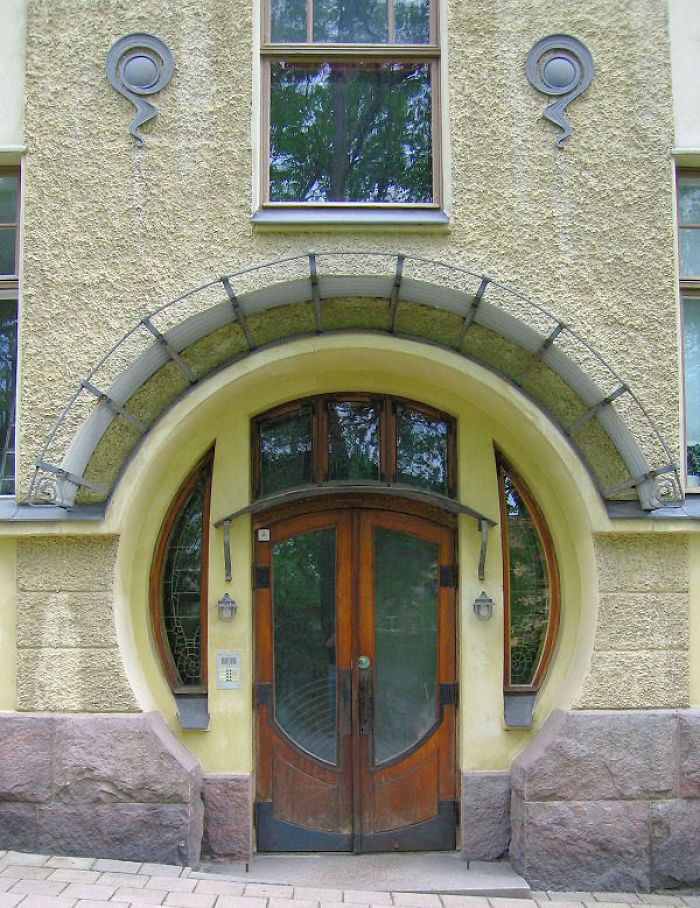#7355. Flowing Art Nouveau: Rounded Arched Facade with Decorative Spirals

Before us stands a remarkable example of Art Nouveau — an architectural style from the late 19th to early 20th century. The building's facade is finished in light yellow stucco with flowing, fluid lines characteristic of the Art Nouveau style. The central element of the composition is an impressive rounded arched doorway, framed by a contrasting stone portal.
The entrance features a massive wooden double door with glass inserts displaying an elegant wave-like pattern — a typical Art Nouveau motif. Above the door is a semicircular transom window, harmoniously integrated into the overall arch form. On both sides of the door are curved windows that follow the roundness of the arch, creating a unified plastic composition.
Particularly noteworthy are the decorative metal elements on the facade — two symmetrically positioned stylized signs resembling spirals or scrolls. These details serve not only as ornamentation but also as a distinctive "signature" of Art Nouveau with its affinity for organic, natural forms.
The lower part of the building is faced with roughly hewn stone, creating a contrast with the smooth surface of the upper section and giving the structure visual stability. The windows of the upper floor are rectangular, balancing the curvilinear forms of the entrance area. Overall, the facade represents a harmonious example of Art Nouveau architecture with its pursuit of plasticity, asymmetry, and decorative qualities.